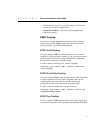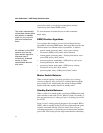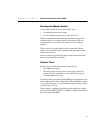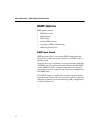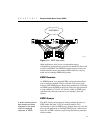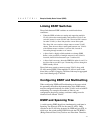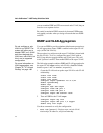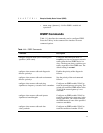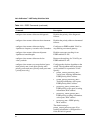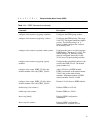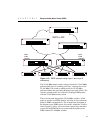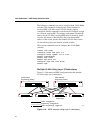
C H A P T E R 11 Enterprise Standby Router Protocol (ESRP)
177
Linking ESRP Switches
Direct links between ESRP switches are useful under these
conditions:
• When the ESRP switches are routing and supporting multiple
VLANs (where the master/standby configuration is split so one
switch is master for some VLANs and a second switch is master
for other VLANs), a direct link provides a more direct path.
The direct link can contain a unique router-to-router VLAN/
subnet. Then the most direct routed path between two VLANs
with different master switches is a direct link, instead of
forwarding through another set of routers.
• A direct link is a highly reliable method to exchange ESRP
hellos, so the possibility of multiple masters for one VLAN is
lessened, should all downstream Layer 2 switches fail.
• A direct link is necessary when the ESRP HA option is used. Use
the direct link to provide Layer 2 forwarding services through an
ESRP standby switch.
Direct links may contain a router-to-router VLAN, along with
VLANs running ESRP. When multiple VLANs are used on the
direct links, use 802.1Q tagging. The direct links may be aggregated
into a load-shared group, if desired.
Configuring ESRP and Multinetting
When configuring ESRP and IP multinetting on the same switch,
the parameters that affect the determination of the ESRP master
must be configured identically for all the VLANs involved with IP
multinetting. For example, the number of links in your
configuration, the priority settings, and timer settings must be
identical for all affected VLANs.
ESRP and Spanning Tree
A switch running ESRP should not simultaneously participate in
Spanning Tree Protocol (STP) for the same VLAN(s). Other
switches in the VLAN being protected by ESRP may run STP, in
which case, the switch running ESRP forwards the STP BDPUs
(Bridge Protocol Data Units), but does not filter them. Therefore,





